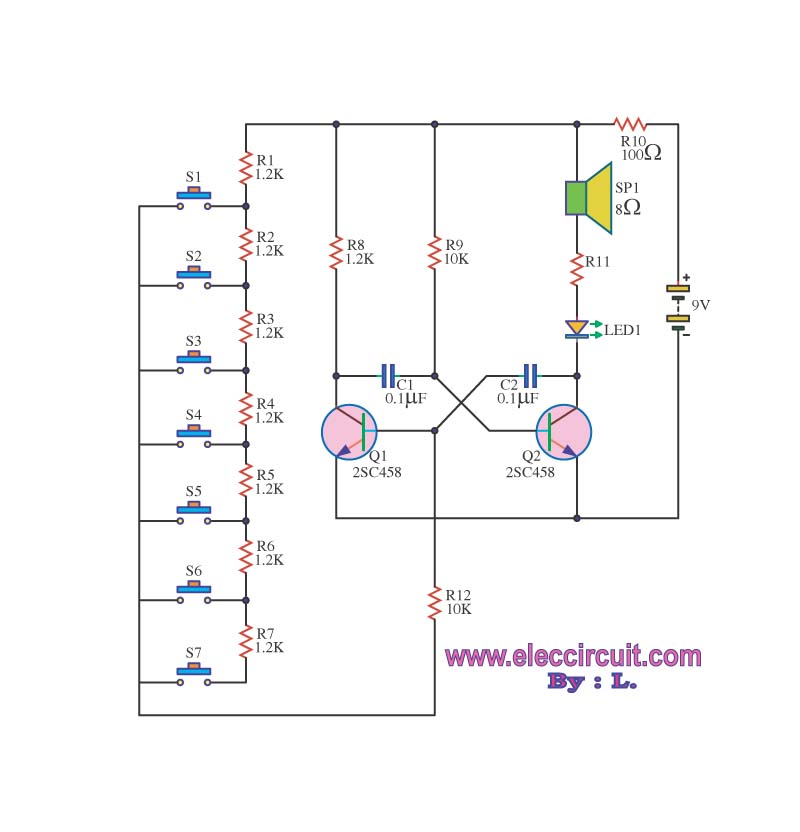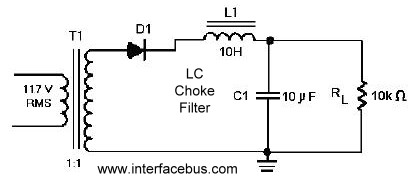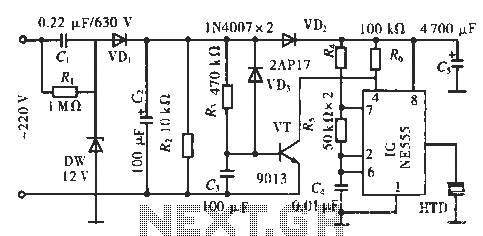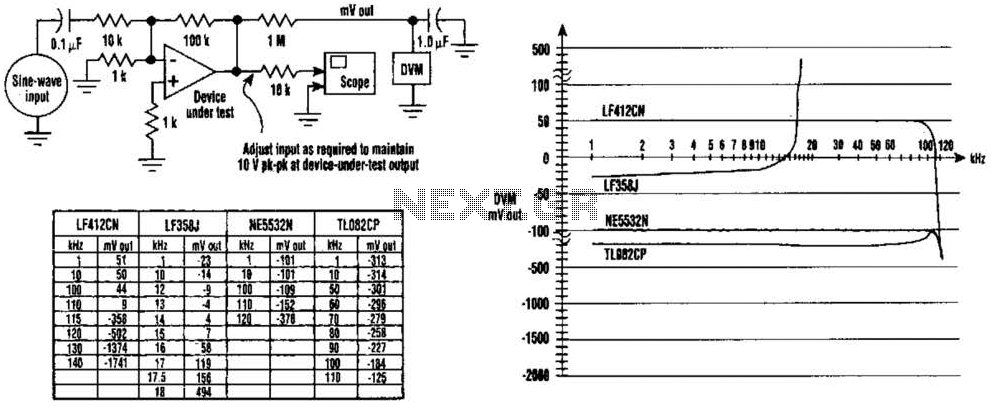
Music Keyboard circuit

The circuit operates as an astable multivibrator, generating a square wave signal at a specific frequency. When powered, the circuit will function continuously.
The astable multivibrator circuit is a type of oscillator that produces a continuous square wave output without the need for any external triggering. This circuit typically consists of two resistors, R1 and R2, and a capacitor, C1, connected to a bipolar junction transistor (BJT) or operational amplifier (op-amp).
When the circuit is powered, the capacitor charges and discharges through the resistors, creating a cycle of high and low output states. The frequency of the output waveform can be determined by the values of the resistors and the capacitor according to the formula:
\[ f = \frac{1.44}{(R1 + 2R2) \cdot C1} \]
Where:
- \( f \) is the frequency of the output signal,
- \( R1 \) and \( R2 \) are the resistances in ohms,
- \( C1 \) is the capacitance in farads.
In practical applications, the astable multivibrator can be used in timer circuits, tone generators, and clock pulses for digital circuits. The output frequency can be adjusted by changing the resistor and capacitor values, allowing for versatility in various electronic applications.
To ensure stable operation, it is important to consider the power supply voltage and the characteristics of the components used, as these will influence the performance and reliability of the circuit. Proper layout and grounding techniques should also be employed to minimize noise and interference, which can affect the frequency stability.The work of the circuit this origin frequency sound circuit model astable multi vibrator. When build the circuit suits power supply the circuit will still.. 🔗 External reference
The astable multivibrator circuit is a type of oscillator that produces a continuous square wave output without the need for any external triggering. This circuit typically consists of two resistors, R1 and R2, and a capacitor, C1, connected to a bipolar junction transistor (BJT) or operational amplifier (op-amp).
When the circuit is powered, the capacitor charges and discharges through the resistors, creating a cycle of high and low output states. The frequency of the output waveform can be determined by the values of the resistors and the capacitor according to the formula:
\[ f = \frac{1.44}{(R1 + 2R2) \cdot C1} \]
Where:
- \( f \) is the frequency of the output signal,
- \( R1 \) and \( R2 \) are the resistances in ohms,
- \( C1 \) is the capacitance in farads.
In practical applications, the astable multivibrator can be used in timer circuits, tone generators, and clock pulses for digital circuits. The output frequency can be adjusted by changing the resistor and capacitor values, allowing for versatility in various electronic applications.
To ensure stable operation, it is important to consider the power supply voltage and the characteristics of the components used, as these will influence the performance and reliability of the circuit. Proper layout and grounding techniques should also be employed to minimize noise and interference, which can affect the frequency stability.The work of the circuit this origin frequency sound circuit model astable multi vibrator. When build the circuit suits power supply the circuit will still.. 🔗 External reference





